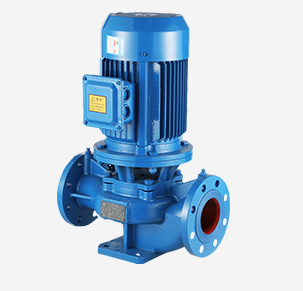Ukrainian
- Afrikaans
- Albanian
- Amharic
- Arabic
- Armenian
- Azerbaijani
- Basque
- Belarusian
- Bengali
- Bosnian
- Bulgarian
- Catalan
- Cebuano
- Corsican
- Croatian
- Czech
- Danish
- Dutch
- English
- Esperanto
- Estonian
- Finnish
- French
- Frisian
- Galician
- Georgian
- German
- Greek
- Gujarati
- Haitian Creole
- hausa
- hawaiian
- Hebrew
- Hindi
- Miao
- Hungarian
- Icelandic
- igbo
- Indonesian
- irish
- Italian
- Japanese
- Javanese
- Kannada
- kazakh
- Khmer
- Rwandese
- Korean
- Kurdish
- Kyrgyz
- Lao
- Latin
- Latvian
- Lithuanian
- Luxembourgish
- Macedonian
- Malgashi
- Malay
- Malayalam
- Maltese
- Maori
- Marathi
- Mongolian
- Myanmar
- Nepali
- Norwegian
- Norwegian
- Occitan
- Pashto
- Persian
- Polish
- Portuguese
- Punjabi
- Romanian
- Russian
- Samoan
- Scottish Gaelic
- Serbian
- Sesotho
- Shona
- Sindhi
- Sinhala
- Slovak
- Slovenian
- Somali
- Spanish
- Sundanese
- Swahili
- Swedish
- Tagalog
- Tajik
- Tamil
- Tatar
- Telugu
- Thai
- Turkish
- Turkmen
- Ukrainian
- Urdu
- Uighur
- Uzbek
- Vietnamese
- Welsh
- Bantu
- Yiddish
- Yoruba
- Zulu
Telephone: +86 13120555503
Email: frank@cypump.com
Гру . 04, 2024 17:58 Back to list
septic tank sump pump
Understanding Septic Tank Sump Pumps Function, Importance, and Maintenance
A septic tank is an essential component of many rural and suburban waste management systems. Designed to treat sewage and wastewater on-site, septic tanks provide a practical solution for areas where municipal sewer systems are not available. One critical part of ensuring the effective operation of a septic tank system is the sump pump, a device that helps maintain the integrity and functionality of the entire setup.
What is a Sump Pump?
A sump pump is a device installed in the lowest part of a septic tank system to remove excess water that accumulates due to flooding or heavy rainfall. This excess water can potentially overwhelm the septic system, leading to backups and system failure. The primary function of a sump pump is to transport this water to a more suitable drainage outlet, preventing pooling and maintaining the proper water levels in the septic tank.
How does a Sump Pump Work?
Typically, a sump pump operates automatically. It consists of a float switch that detects the water level in the sump basin. When the water rises to a certain level, the float switch activates the pump, which then begins to remove the excess water. This process continues until the water level drops to a pre-determined level, at which point the float switch deactivates the pump. Some advanced sump pump systems also come equipped with alarms that alert homeowners when the water level is too high, indicating potential problems within the septic system.
The Importance of a Sump Pump in a Septic System
2. Protects the Environment By managing excess water, sump pumps help prevent wastewater contamination of nearby water sources, such as wells and streams.
3. Preserves Property Value A well-maintained septic system, aided by a functional sump pump, ensures that property values are upheld. A malfunctioning septic system can lead to costly repairs and negatively impact a property's worth.
septic tank sump pump

4. Enhancing Longevity By alleviating undue stress on a septic system, sump pumps contribute to a longer operational lifespan for both the septic tank and the entire system.
Maintenance Tips for Sump Pumps
To ensure that a sump pump operates effectively and lasts many years, regular maintenance is crucial. Here are a few essential tips
1. Routine Inspection Periodically check the sump pump for any signs of wear or malfunction. This includes looking at the electrical connections, the pump casing, and the discharge pipe for clogs or damage.
2. Clean the Sump Basin Remove any accumulated debris from the sump basin to ensure the pump doesn't get clogged and can operate freely. This should be done at least once a year.
3. Test the Pump Conduct a test to ensure that the sump pump turns on and operates as expected. Pour water into the sump basin to trigger the float switch and verify the pump’s functionality.
4. Check the Discharge Line Make sure the discharge line is clear of obstructions and directs water away from the foundation of the house, preventing any flooding or water damage.
5. Consider a Backup System In areas prone to severe flooding, installing a backup pump (like a battery-operated sump pump) can provide additional security against system failure during times of heavy rain or power outages.
Conclusion
A sump pump is a vital part of the septic tank system that plays a crucial role in preventing overflows and maintaining environmental health. Understanding its operations, importance, and how to maintain it can save homeowners from emergencies and costly repairs. Properly caring for a sump pump ensures that it functions effectively, providing peace of mind and ensuring the longevity of the entire septic system. Regular checks and maintenance will not only keep your septic system running smoothly but also protect your property from potential damage.
-
Custom Drilling Mud and Slurry Pump Supplier - High Efficiency, Tailored Solutions
NewsJun.10,2025
-
Supply Vertical Submersible Sewage Pump High-Efficiency WQ/QW Pumps Supplier
NewsJun.10,2025
-
Premium Sewage Ejection System & Pumps Efficient Waste Removal
NewsJun.09,2025
-
Premium Wholesale Slurry Pump Impellers Durable & Efficient Slurry Handling
NewsJun.09,2025
-
Top Sewage Pump Companies Durable Industrial Solutions for Efficiency
NewsJun.09,2025
-
Heavy Duty Slurry Pumps - OEM High Performance & Bulk Wholesale
NewsJun.09,2025










